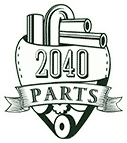Left Driver Side Replacement Power Non Heated Mirror 1990-1995 Toyota 4runner on 2040-parts.com
Ontario, California, US
Mirrors for Sale
 Right replacement power folding non heated mirror toyota matrix pontiac vibe(US $49.47)
Right replacement power folding non heated mirror toyota matrix pontiac vibe(US $49.47) 1990-1994 shadow/sundance power remote side mrror right(US $31.00)
1990-1994 shadow/sundance power remote side mrror right(US $31.00) Left side replacement power non heated mirror 92-98 oldsmobile achieva 22605943(US $39.47)
Left side replacement power non heated mirror 92-98 oldsmobile achieva 22605943(US $39.47) Passenger side replacement power chrome non heated mirror 90-95 toyota 4runner(US $52.86)
Passenger side replacement power chrome non heated mirror 90-95 toyota 4runner(US $52.86) Driver replacement power heated mirror 02-06 toyota camry usa built 87940aa100c0(US $33.03)
Driver replacement power heated mirror 02-06 toyota camry usa built 87940aa100c0(US $33.03) Driver side replacement power heated mirror 05-09 toyota avalon 87940ac070c0(US $49.37)
Driver side replacement power heated mirror 05-09 toyota avalon 87940ac070c0(US $49.37)
Renault Kangoo ZE electric concept at 2009 Frankfurt motor show
Tue, 15 Sep 2009By Ben Pulman First Official Pictures 15 September 2009 12:00 This is the Renault Kangoo ZE, just unveiled at the 2009 Frankfurt motor show. It’s a preview of the Kangoo-based electric commercial vehicle that Renault will sell from 2011. That white paint is practical – it’s heat-reflective and helps to prevent temperature fluctuations, as does the Thermos-style double-layer bodywork.
Jeep’s ‘Ugly is the new appealing’ Cherokee costs from £25,495
Wed, 30 Apr 2014The new Jeep Cherokee (pictured) is now on sale in the UK The new Jeep Cherokee debuted at the New York Motor Show in 2013, giving Jeep a new, smaller SUV with ‘good to be ugly’ looks to mop up the still growing demand for SUVs of all sizes. And now it’s going on sale in the UK. Based on the same underpinnings as the Alfa Giulietta, the new Cherokee comes in at a more affordable price than its big brother, but if you want the entry-level 2.0-litre Longitude 140 you’ll have to make do with front-wheel drive.
Peugeot 108 (2014) first official pictures
Fri, 14 Feb 2014By Ollie Kew First Official Pictures 14 February 2014 07:00 This is the new Peugeot 108 – the replacement for the Peugeot 107 city car. Like its predecessor, the 108 will be sold in Toyota guise as the new Aygo, and be restyled to become the new Citroen C1. All three will make their first appearances at the Geneva motor show in March 2014.

